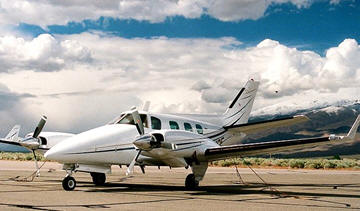|
|||||||||||||||||
|
|
|
|||
|
By Daniel Baxter |
||||
 |
February 8, 2011 - The FAA is cautioning pilots and
operators to properly check flap operation prior to
takeoff on the Beechcraft Duke (BE-60) by performing a
flap prefight check.
This comes after the crash of a Beechcraft Duke (BE-60)
model airplane, N105PP that crashed just after takeoff
killing the pilot. The initial impact point was in a
grassy area, left of runway 27, near taxiway F.
On
December 4, 2007, a Beechcraft Duke (BE-60), N105PP, was
destroyed when it crashed after takeoff from New Castle
Airport (ILG), |
|||
|
No flight
plan had been filed for the flight to Lehigh Valley
International Airport (ABE),
The FAA is
recommending that pilots and operators of the Duke (BE-60)
should properly verify the full operation of their wing flaps
prior to takeoff in accordance with the Before Takeoff
procedures. The Pilot?s Operating Manual reads ?Flaps ? Check
operation and set.? This can include a visual verification of
flap position and corresponding agreement with cockpit
indicators. If improper operation is suspected, they should
visually inspect each flap position. According to an airport employee, a certificated flight instructor, who was at the time in an airport vehicle near the approach end of runway 27, observed the Beechcraft Duke Aircraft in the engine run-up area. The flight instructor reported the run-up appeared normal, he did notice the airplane's flaps were extended. After the run-up, the airplane taxied toward the runway with both flaps still extended. |
||||
|
The
The airplane then
entered a "slight" left bank, and the controller asked the pilot if he
still intended turning to the north. The pilot responded, "five papa
papa," and the transmission "cut off." The airplane then made a "steep
climb" to 250 to 300 feet, and as it climbed, the angle of bank appeared
to increase. As the airplane reached the top of its climb, the nose
"came down and went straight into the ground." Upon impact, the airplane
became engulfed in flames.
According to the
Duke 60 Series Maintenance Manual, "the flaps consist of a section on
each wing driven by a single electric motor. A flexible drive shaft
extends from the motor assembly to a jackscrew actuator for each
section." In addition, limit switches are installed on the outboard side
of the inboard left wing flap track to stop flap travel at 0 degrees
(full up), 15 degrees (approach), and 30 degrees (full down), depending
on the position of the flap control switch.
The airplane's
logbooks were not located. A mechanic who had previously worked on the
airplane recalled the pilot mentioning that the flap motor had been
worked on in
The flap drive
mechanism was examined at Hawker-Beechcraft facilities, |
|
|
| ?AvStop
Online Magazine
Contact
Us
Return To News
|
|

